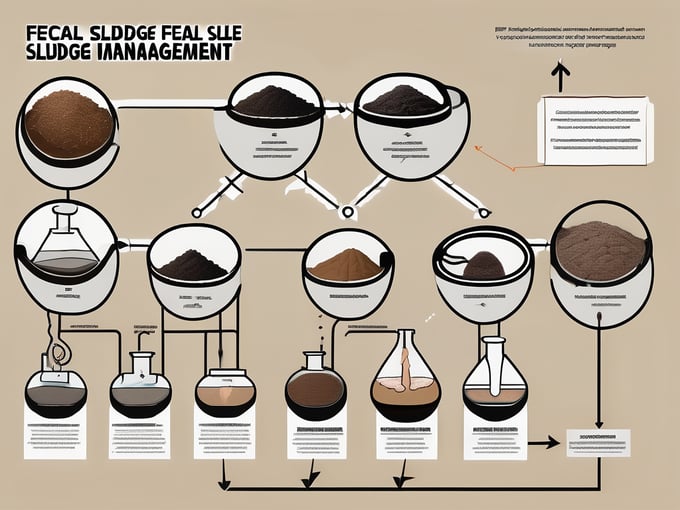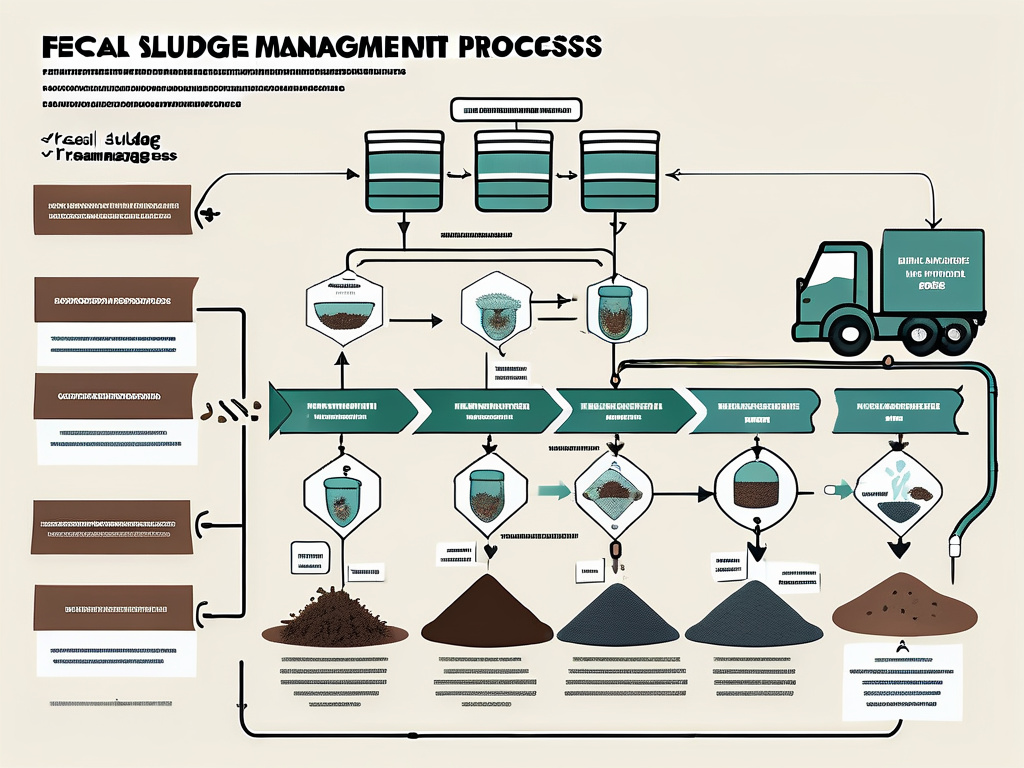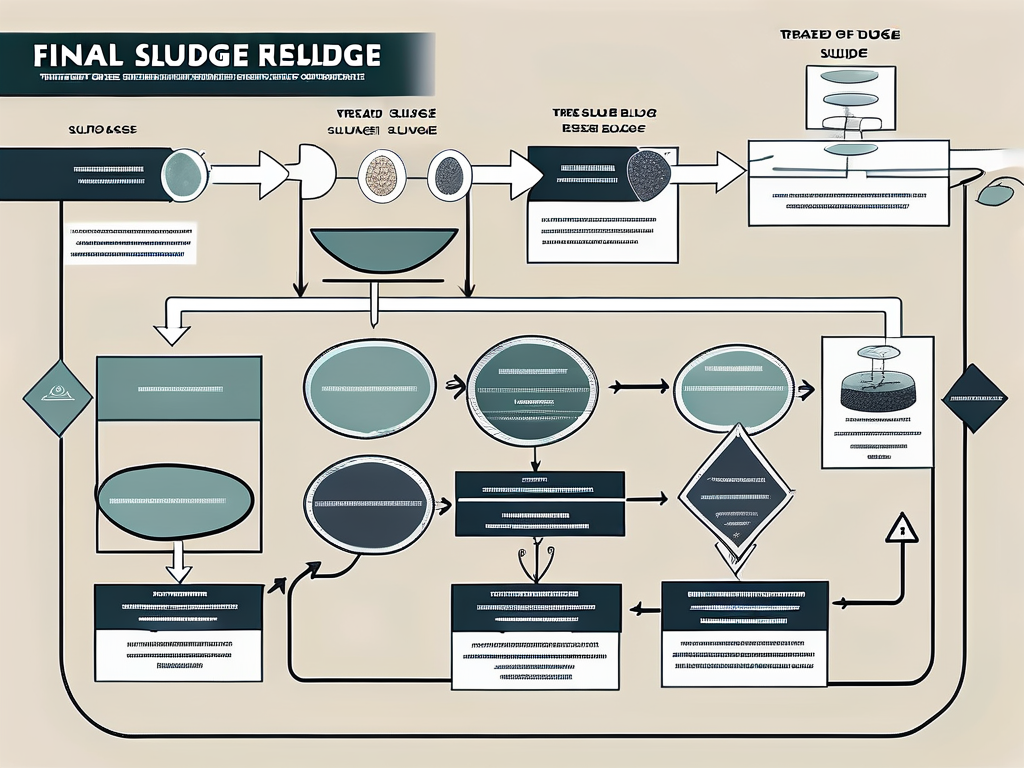
Fecal Sludge Management: Wastewater Treatment Explained
Fecal Sludge Management (FSM) is a critical component of wastewater treatment, particularly in regions where conventional sewerage systems are not feasible or economically viable. It involves the collection, transport, treatment, and disposal or reuse of human excreta from pit latrines, septic tanks, or other non-sewered sanitation systems.
FSM is a complex process that requires a thorough understanding of various technical, environmental, and public health aspects. This glossary article aims to provide a comprehensive overview of the key concepts and practices involved in FSM, with a focus on wastewater treatment.
Understanding Fecal Sludge
Fecal sludge is a by-product of onsite sanitation systems. It is a mixture of human excreta, water, and solid waste that accumulates in pit latrines, septic tanks, and other containment facilities. The characteristics of fecal sludge can vary widely depending on the type of sanitation system, the population served, and local conditions.

Managing fecal sludge effectively is crucial for protecting public health and the environment. If not properly treated, fecal sludge can contaminate water sources, spread disease, and contribute to pollution.
Characteristics of Fecal Sludge
Fecal sludge is typically characterized by its physical, chemical, and biological properties. These properties can influence the choice of treatment methods and the potential for resource recovery.
Physical properties include aspects like consistency, color, and odor. Chemical properties can include pH, organic matter content, and nutrient composition. Biological properties refer to the presence of pathogens, such as bacteria, viruses, and parasites.
Challenges in Fecal Sludge Management
FSM presents several challenges, particularly in low-income urban areas. These challenges can include inadequate infrastructure, lack of technical knowledge, and social stigma associated with handling human waste.
Other challenges can include the high cost of transport and treatment, lack of regulation and enforcement, and difficulty in achieving sustainable financing for FSM services.
Collection and Transport of Fecal Sludge
The collection and transport of fecal sludge are the first steps in FSM. These processes involve removing sludge from onsite sanitation systems and transporting it to a treatment facility.
Collection and transport methods can vary widely depending on the type of sanitation system, the volume of sludge, and local conditions. They can range from manual emptying with buckets to mechanized pumping with specialized vehicles.
Manual Emptying
Manual emptying involves workers entering the pit or tank and removing the sludge by hand or with simple tools. This method is often used in areas where access is difficult or where mechanized equipment is not available.
However, manual emptying can pose serious health risks to workers and the surrounding community if not done properly. It is therefore crucial to provide adequate protective equipment and training to workers, and to ensure that the sludge is properly contained and transported.
Mechanized Emptying
Mechanized emptying involves the use of specialized vehicles, known as vacuum trucks, to pump the sludge out of the pit or tank. This method is generally safer and more efficient than manual emptying, but it requires more sophisticated equipment and infrastructure.
Vacuum trucks can vary in size and capacity, and they can be equipped with various features to improve efficiency and safety. For example, some trucks have high-pressure water jets for breaking up hardened sludge, while others have sealed tanks to prevent spills and odors.
Treatment of Fecal Sludge
Treatment is a critical step in FSM, as it reduces the volume of sludge and removes or inactivates harmful pathogens. The goal of treatment is to produce a safe and stable end product that can be disposed of or reused without posing a risk to public health or the environment.
The choice of treatment method depends on several factors, including the characteristics of the sludge, the available resources, and the desired end use of the treated sludge. Common treatment methods include drying, composting, anaerobic digestion, and thermal processes.
Drying and Composting
Drying involves exposing the sludge to the sun and wind to evaporate the water content. This reduces the volume of the sludge and makes it easier to handle. However, drying alone does not effectively kill pathogens, so it is often combined with other treatment methods.
Composting is a biological process that involves mixing the sludge with organic materials, such as straw or leaves, and allowing it to decompose under controlled conditions. This process generates heat, which can kill pathogens, and produces a nutrient-rich compost that can be used as a soil conditioner.
Anaerobic Digestion and Thermal Processes
Anaerobic digestion is a biological process that involves breaking down the sludge in the absence of oxygen. This process produces biogas, which can be used as a source of renewable energy, and a stabilized sludge that can be used as a soil conditioner.
Thermal processes involve heating the sludge to high temperatures to kill pathogens and reduce the volume. These processes can include incineration, pyrolysis, and gasification. They can produce energy and ash, which can be used as a soil amendment, but they require more sophisticated technology and infrastructure.
Disposal and Reuse of Treated Sludge
The final step in FSM is the disposal or reuse of the treated sludge. This step must be carefully managed to prevent the recontamination of the environment and to maximize the potential benefits of resource recovery.

Disposal methods can include landfilling, burial, or discharge into water bodies. However, these methods can have negative environmental impacts and are generally considered as last resort options.
Land Application
Land application involves spreading the treated sludge on agricultural land as a soil conditioner. This can improve soil fertility and structure, and reduce the need for chemical fertilizers.
However, land application requires careful management to prevent the spread of pathogens and to avoid overloading the soil with nutrients. It is therefore important to monitor the quality of the sludge and to follow appropriate application rates and methods.
Energy Recovery
Energy recovery involves using the biogas produced during anaerobic digestion or the heat generated during thermal processes as a source of renewable energy. This can reduce the reliance on fossil fuels and contribute to climate change mitigation.
However, energy recovery requires more sophisticated technology and infrastructure, and it may not be feasible in all contexts. It is therefore important to assess the potential benefits and challenges of energy recovery in each specific context.
Regulation and Governance of FSM
Effective regulation and governance are crucial for ensuring the sustainability and effectiveness of FSM services. This involves setting and enforcing standards for the collection, transport, treatment, and disposal or reuse of fecal sludge, and providing support and oversight to service providers.
Regulation and governance can also involve promoting public awareness and acceptance of FSM, and facilitating the integration of FSM into broader urban sanitation and wastewater management strategies.
Standards and Guidelines
Standards and guidelines provide a framework for ensuring the quality and safety of FSM services. They can cover aspects like the design and operation of sanitation systems, the protection of workers and the public, and the quality of the treated sludge.
Standards and guidelines can be developed and enforced by various entities, including government agencies, professional associations, and international organizations. They should be based on scientific evidence and best practices, and they should be regularly updated to reflect new knowledge and technologies.
Capacity Building and Support
Capacity building and support involve providing training, technical assistance, and resources to service providers and other stakeholders. This can enhance their ability to deliver high-quality FSM services and to comply with standards and regulations.
Capacity building and support can also involve promoting research and innovation, facilitating knowledge exchange, and fostering partnerships and collaboration among stakeholders. These efforts can contribute to the continuous improvement and scaling up of FSM services.
Conclusion
Fecal Sludge Management is a complex and multifaceted field that requires a comprehensive and integrated approach. By understanding and addressing the various aspects of FSM, from the characteristics of fecal sludge to the challenges and opportunities in collection, treatment, and reuse, we can contribute to the protection of public health and the environment, and to the achievement of sustainable urban sanitation.
This glossary article has provided a detailed overview of the key concepts and practices in FSM, with a focus on wastewater treatment. It is hoped that this information will serve as a valuable resource for practitioners, researchers, policymakers, and other stakeholders in the field of wastewater management.



